TLDR The study found that analyzing certain cell signaling pathways is not a reliable method to tell apart two types of skin tumors.
The study conducted an immunohistochemical analysis of the mTOR and hypoxia signaling pathways in basal cell carcinoma (BCC) and trichoepithelioma (TE) using 45 BCC and 35 TE samples. Both tumor types exhibited significant activation of the mTOR pathway, with BCC showing higher activation levels. Hypoxia-inducible factor 1-alpha (HIF-1α) was upregulated in BCC, indicating a role of hypoxia signaling in its pathogenesis. The findings suggested that while these pathways are active in both BCC and TE, they do not serve as reliable diagnostic tools to distinguish between the two, but they do highlight potential therapeutic targets for BCC.
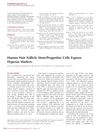 33 citations
,
March 2013 in “Journal of Investigative Dermatology”
33 citations
,
March 2013 in “Journal of Investigative Dermatology” Human hair follicle stem cells show signs of low oxygen levels, which may be important for hair growth and preventing baldness.
146 citations
,
February 2012 in “Journal of Clinical Investigation” Blocking Hedgehog signaling offers new treatment options for advanced basal cell carcinoma.
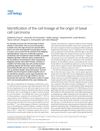 351 citations
,
February 2010 in “Nature Cell Biology”
351 citations
,
February 2010 in “Nature Cell Biology” Basal cell carcinoma mostly starts from cells in the upper skin layers, not hair follicle stem cells.
18 citations
,
January 2009 in “Experimental Dermatology” mTOR may link different pathways in hair follicle tumor formation.
18 citations
,
January 2009 in “Experimental Dermatology” mTOR may link different pathways in hair follicle tumor formation.
35 citations
,
July 2022 in “Frontiers in Cell and Developmental Biology” Proper mTOR signaling is crucial for healthy skin and preventing skin diseases.
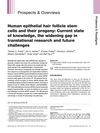 106 citations
,
March 2014 in “BioEssays”
106 citations
,
March 2014 in “BioEssays” We need more research to better understand human hair follicle stem cells for improved treatments for hair loss and skin cancer.
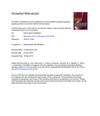 9 citations
,
May 2019 in “Experimental Cell Research”
9 citations
,
May 2019 in “Experimental Cell Research” HPV genes and estradiol increase a cancer-related signaling pathway, which may be targeted for cervical cancer treatment.
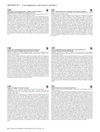 April 2018 in “Journal of Investigative Dermatology”
April 2018 in “Journal of Investigative Dermatology” Higher levels of nidogen1 and type IV collagen are found in basal cell carcinoma compared to normal skin.




